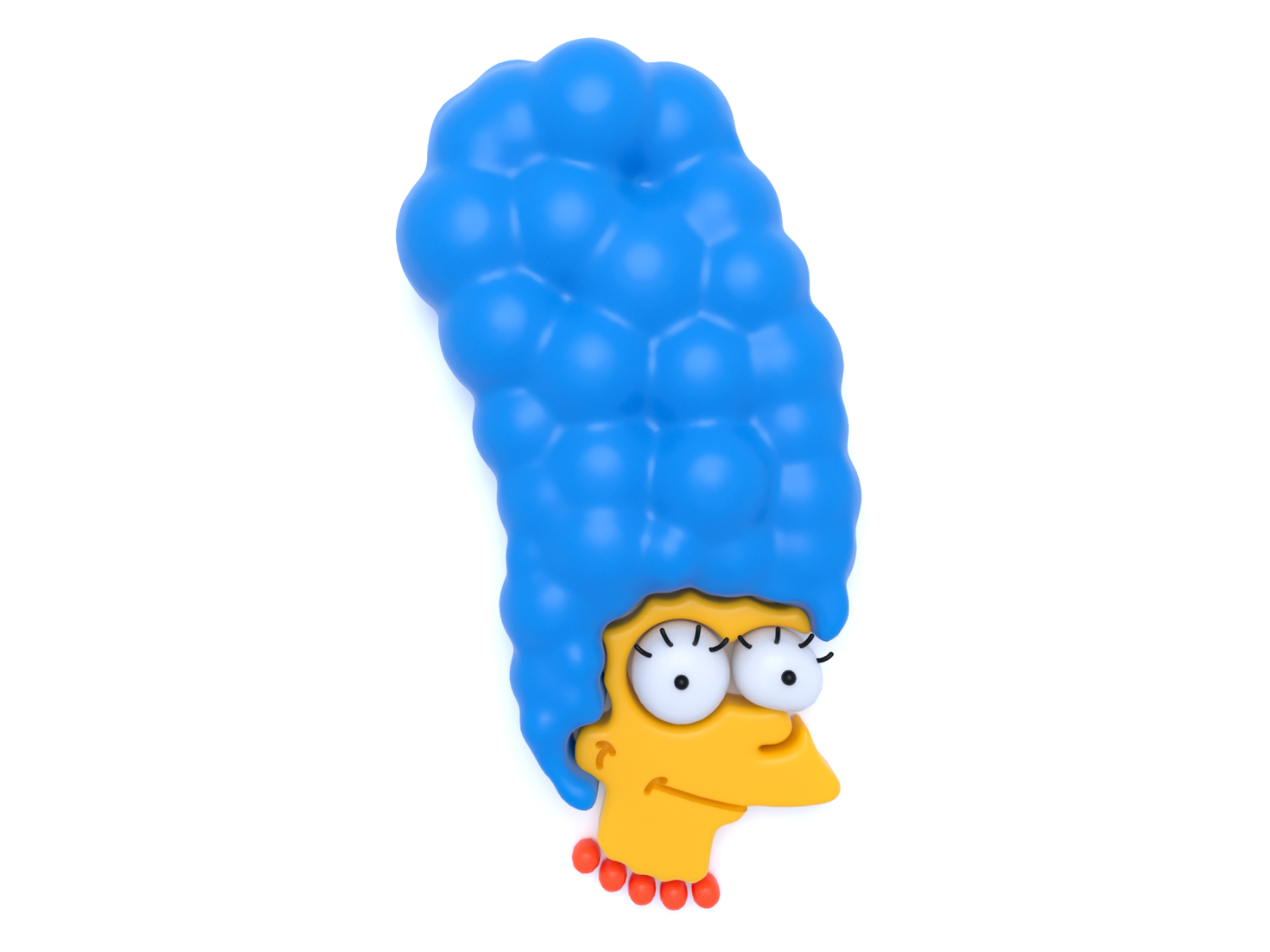
“Large Marge sent me,” says Pee Wee to the travelers at the Cabazon attraction, and they understand exactly what he means. Is it a highway? I think, rather, Pee Wee’s been sucked into an approximation of Marge’s own invention, where the opacity of her ghostly form depends on self-imposed contextual conditions. But there are no physical suggestions of a highway in the scene, just the high-beams from Marge’s semi tearing through fog. Large Marge tells us, “On this very night, ten years ago, along this same stretch of road in a dense fog just like this, I saw the worst accident I ever seen.” Marge’s prerogative in death is to drive indefinitely along the highway, flitting between points and people at her own discretion. With the same supernatural flourish of Pee Wee’s arrival, these dinosaurs are smoothed into an alternative and self-reflexive cosmology that is all their own. The Cabazon Dinosaurs, for example, now mark the entrance to a new creationist museum ( see how it feels to walk alongside these reptiles, just as our ancestors did some six-thousand years ago). In the absence of its urban context the uncanny finds solid footing, and we invite it to invent its own context. We understand it, in other words, on its own terms. When the replica is removed from this connection through time, space, believability, or other means of distancing, there comes a point where its connective ends grow fuzzy, and we become less preoccupied with how it might exist in relation to something else. In pursuing the not urban I am necessarily pursuing an inverted scale of connectivity what is the least networked object? The replica, the knockoff, the low-budget roadside attraction, each have limited connections, as they are really only interested in that which they attempt to copy. He was spirited along a lonely stretch of highway to the Cabazon Dinosaurs, formerly Claude Bell’s Dinosaurs, Claude Bell being a sculptor employed at Knott’s Berry Farm-understood in the Southern Californian popular consciousness as a lesser, or knockoff, Disneyland wannabe.

Somehow it only took two minutes to utterly destroy your childhood and transform you. It might look like this: forty minutes into Pee Wee’s Big Adventure (1985), the titular character hitchhikes along a highway with a ghost (Large Marge, killed in a traffic accident 10 years prior), and is dumped at a roadside attraction consisting of two steel and concrete dinosaur replicas. Even if you wanted to forget about Large Marge you wouldn't be able to. How wide, how varied, is the space that is opened up through this inversion? What does the not urban look like? How then can we conceive of its absence? We even hesitate to place urban in its tired dichotomy with rural, choosing instead to turn the word against itself (it is what it is not). The logic here reads: if I am able to receive an Amazon package-if I am to be located as a connected point on the logistics highway-I am subject to the urban. We understand the urban, then, as a measure of connectivity.

In his introduction to the edited volume The Infrastructural City, architectural historian Kazys Varnelis describes networks- “codependent systems of environmental mitigation, land-use organization, communication and service delivery”-as the “dominant form of organization.” 1 Most image capture devices (such as digital cameras) that output JPG creates files in the Exif format, the camera industry standardized for metadata interchange.Īpple Safari, Google Chrome, Mozilla Firefox, Internet Explorer, Adobe Photoshop, Paint Shop Pro, the GIMP, ImageMagick, IrfanView, Pixel image editor, Paint.NET, Xara Photo & Graphic Designer.The pedagogical reflex these days is to index most things to the urban-in terms familiar to students of landscape architecture, this is most swiftly done by thinking through networks. Image files that employ JPG compression are commonly called "JPG files" and are stored in variants of the JIF image format. JPG typically achieves 10:1 compression with little perceptible loss in image quality. The degree of compression can be adjusted, allowing a selectable tradeoff between storage size and image quality. JPG is a commonly used method of lossy compression for digital images, particularly those produced by digital photography. jpg-large file extension to be automatically assigned to some JPEG (Joint Photographic Experts Group) image files downloaded from Twitter, a social networking service, using Google Chrome/Chromium.

There is a known and documented bug in Google Chromium/Chrome web browser.

jpg-large extension is one of the rare file extensions created by bugs in computer programs.


 0 kommentar(er)
0 kommentar(er)
